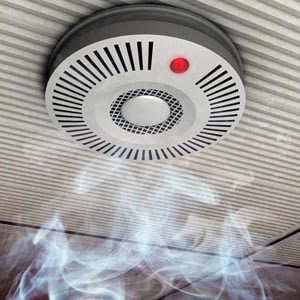Whenever a residential fire occurs, there’s always an investigation in the aftermath, led by officials, to determine how the blaze occurred, why it happened and what can be learned from it to reduce the risk of it happening again. Some fire starters are more common than others, but no matter how they present themselves, each has a story to tell that fire officials are charged with determining.
The following are the five most frequent causes of home fires in the United States today, as detailed by the NFPA, starting with the most common of them all: Cooking.
1. Cooking
The most trafficked room in the typical house is the kitchen, which also happens to be the place where fire danger is most likely to occur. According to the NFPA’s estimates, two out of every five home fires take place in the kitchen. Of these, approximately 66% are caused by cooking materials, usually the oven or burners on stove tops.
While the kitchen may typically be the room of the house that sees the most people, it’s when they’re not there that accidents happen. Fire officials recommend always have someone in the vicinity when foods is cooking, be it in the oven or the range.
2. Heating
When the temperatures turn cold, it’s time to dial up the heat in the house. But these warming features can occasionally lead to accidents, usually due to improper maintenance. Failure to clean creosote buildup in chimneys is the leading cause of heating equipment fires, according to the NFPA’s figures. Creosote is a black, tar-like substance that attaches to the interior of chimneys over time, especially when homeowners use their fireplaces to heat their home. Homeowners are strongly advised to have their chimneys serviced on an annual basis, where professionals will do what it takes to clean creosote buildup, which is highly flammable. It’s also important to keep items that can catch fire away from heaters, be them portable or fixed.
3. Cigarette smoking
Kicking the habit once and for all not only dramatically improves the average smoker’s life, but it also reduces the risk of residential fires, as smoking materials are the third-most common cause of blazes that happen at home. Between 2007 and 2011, around 17,900 home structure fires in the U.S. per year stemmed from cigarettes, resulting in an estimated $509 million in homeowners insurance losses and property damage.
Many Americans today have “no smoking zones” in their house, to shield other members from the health effects of secondhand smoke, but keeping the interior smoke-free can also yield safety benefits. At the very least, fire officials suggest making certain rooms of the house off limits to smoking, like the bedroom or other areas where smoldering ashes can cause furnishings to catch fire.
4. Electrical
Modern-day conveniences – like electricity – have their safety hazards, typically due to malfunctioning equipment. Nearly 50% of all electrical fires involve lighting equipment, according to NFPA’s figures, resulting in an average of 47,800 home fires per year. When using appliances, make sure that outlets appear normal and avoid plugging in cords that are damaged, whether they’re frayed, loose or bare. Also, avoid using more than one receptacle for electricity usage to prevent overloading the circuit.
5. Candles
There’s nothing like the “welcome home” smell of a scented candle, so inviting that it can often leave homeowners to forget that one is on. Nationwide, 29 home candle fires are reported to fire officials per day, the NFPA has reported based on its annual estimates. From 2007 to 2011, candles caused 35% of home fires and 6% of direct property damage. Among burn-related injuries, 7% were due to candles.
Homeowners should never leave a room unattended where a candle is burning, especially if they have young children or pets at home, whose rough housing can lead to an accident. Candles should also be placed in sturdy holders to reduce the risk of them tipping over.
For information and resources on fire safety, be sure to visit the National Fire Protection Association’s website, as well as the U.S. Fire Administration’s homepage. Regarding home insurance coverage, speak with RC4 Insurance Agency, LLC today.
Article From Selective Insurance


